Agapantus - graceful bulbous plants of the Agapant family. Translated from the Greek Agapanthus as the "Flower of Love", which exactly transfers the external romanticism, tenderness and vanity of these plants. They come from warm Africa, so in latitudes with temperate climates are more often grown at home, but in the warm regions these "African lilies" can be met in flower beds. It is easy to grow this culture if the weather conditions contribute to this, so let's look at how to plant and grow this beautiful flower at home.
Agapanthus - cultural description
Agapantus is a herbal perennial plant with a large branched rhizome. In the root rosette of Agapantus collected leaflets of a removal form. Their length reaches 22 cm, and the width is 3-4 cm. During the flowering period among saturated-green foliage, a long bloomer grows (60-150 cm), on which an umbrella inflorescence with a large number of flower bells is formed.
What is the difference between Agapanthis and why gardeners like him so much:
- Color range of inflorescence is provided by all the shades of blue and purple colors, and sometimes white color of petals is found.
- Agapanthus flower buds resemble bells or miniature lilies sitting on thin stems. The length of each booton is about 5-6 cm. Oval petals, with a dark strip in the center. In one rosette there are more than 150 inflorescences.
- Blossom lasts about 60 days, during this time Agapanthus gradually opens its buds. Their aroma is unobtrusive and pleasant. Culture is also suitable for cutting.
- Agapanthus is very thermalized, so it wins well only in warm edges. But it does not stop the gardeners, and at the end of the summer, Agapanthus transplanted into the pot and he has to "live" the whole winter in the room.
- In nature, there are 10 varieties of Agapantus. Some of them are evergreen, the rest are deciduous.
- The fruit of agapaentum is a seed box with a lot of dark seeds flat shape.
- African lily agrotechnology is simple - the plant is unpretentious and well develops.
- Agapanthus perfectly amenable to breeding. In culture, new shades of buds often arise - ink, lilac-white, blue, celestial, and striped varieties have appeared.
- The flowering of the plant falls on June-October, depending on the type and variety.
- Agapanthus has a property of purifying air from radionuclides, toxins, viruses and bacteria.
- The plant stands for a long time in a cut (up to 16 days), but for this you need to cut the color space immediately after dissolving the first bud. If the flower is knocked out, it retains its beauty and is suitable for the formation of dry ikebane.
Agepantus has a very positive feature - there are many poisonous substances on his leaves, so it is better to limit the contact of the skin of the arms with a sheet rosette.
Agapanthus, species and varieties
The African perennial does not differ in a large variety of species, but thanks to intensive reversal, many interesting hybrids constantly appear. In nature, there are several types of agapaentus, but in culture they grow 4 main types:
- Agapantus African.This is an evergreen herbal culture growing up to 60 cm in height. It is more suitable for indoor cultivation, but at the same time it grows perfectly in large vases in the yard. The inflorescences of the umbrellas are painted into lilac and blue tones, some varieties are distinguished by the presence on the petals of non-latch strips of dairy.
- Agapanthus bellol. Miniature leaf foll family representative. The variety is characterized by a socket of narrow and short leaves, a saturated purple color of the petals.
- Agapanthus East. Evergreen variety, average, with wide, but slightly shortened leaves. On the flowers, small flowers of pale purple color are blooming.
- Agapanthus umbrella. This species does not exceed 75 cm in height. The leaves are dark green, unusually wide, with a pronounced groove along the entire length. A large ball with numerous flowers of blue blue shades blooms on a fragile bloomer.
- Agapanthus closed. The plants are formed downstream buds that are completely dissolved. Coloring petals from blue to ink color. This species has the highest varieties reaching 1.5 m in height. It happens the type of leaf fall and evergreen, which depends on the climatic conditions of growth. Flowers the view until the end of October.
Popular decorative varieties:
- Variagates are a variety of high bloom and gentle blue flowers on which white stripes are bang.
- Albus - a tall bush is characterized by large umbrella inflorescences of white color up to 25 cm in diameter. Albus Nanus - dwarf variety up to 40 cm high.
- Albidus is a unique variety of this species. On high blooming blooming white buds with a red spot on the pickerels.
- Peter Pen is a magnificent dwarf perennial height of 35-37 cm. Flowers with skiing-blue bells. It looks great in the personnel.
- Star Quolati - a variety with a standby naked bloomer up to 100 cm in height. Flower coloring - cream, lilac, blue. Perfectly stands in Wednesday to 16 days.
- Liliput is a low-spirited agapaentus with bright small inflorescences of dark purple, sometimes almost black. Floweros height up to 30 cm.
- Pinocchio is a popular grade 80 cm high with flowers - "gramophilics" of indigo colors. It is more often used for growing in room conditions.
Agapantus - Cultivation of seeds
Sowing seeds of African lily produce in spring. If you are going to grow a plant in the open ground, seed seeds better in April, so that the seedlings go to March, and you were able to transplant them to the flower bed. In the average latitudes, Agapanthus does not very well tolerate the open soil, but it is quite possible to grow it at home, and in the summer a little pull it into the garden.
How to sow seeds of Agapantus:
- To show shoots, select a warm room with a temperature not lower than 24 ° C.
- Mix peat with perlit (1: 3) and fill the soil container.
- Soil Moisten a little with a spacker and embank the seeds on top.
- Since the seeds are very small, you do not need to deepen them into the ground, just sprinkle them from above with a small amount of sand.
- Cover the container with glass or oilcloth, ventilate the greenhouse every day, wipe the condensate.
- The soil must constantly moisten, so that she does not drive, otherwise the Agapantus from the seed will not go.
- Shoots will appear in a week, after which the film shelter needs to be removed.
- Now seedlings need to be moderately watering, providing them with solar heat and stable air temperature (not lower than 25⁰С).
- After the advent of the second leaf, the seedlings are seeded into the ground mixture of the turf, humus, foliage, sand (2: 2: 2: 1).
- The flowering of agapance grown from seeds is 5 years after landing.
Agapantus - landing and care in the open soil
In the cold regions, Agapanthus will develop and blossom only in greenhouse conditions. But in the hot regions, there are practically no problems with landing and further departure, since the plant is very unpretentious.
Choosing a place under the landing of Agapantus
To please Agapantus, it is worth choosing a sunny plot with a small shading, without drafts. If you plant an African beauty in the shade, the paints of the leaves are blocked, the plant will deteriorate and it is unlikely to bloom. And if the bloomer appears, then the inflorescences on it will be weak and ugly. At the same time, it is necessary to eliminate the constantly burning sun, so the perfect conditions for Agapantus will be a lace feud on the south side of the site.
Abundant and prolonged bloom is observed in plants planted in the soil with a neutral pH. Well, since Agapanthus forms a spoiled leaf outlet, it is important to allocate a spacious area of \u200b\u200bat least 50 cm in diameter.
Agapanthus, planting on the flower
Landing shoots or home plants is carried out after the onset of steadily warm weather (usually it happens by mid-May). During the transplant, it is necessary to very carefully to extract the roots, because they are very fragile and easily damaged, and this leads to the death of Agapantus.
The process of landing Agapantus:
- Drop the landing yam with a depth of 8 cm. If you land at once several plants, observe the distance between them at least 50 cm.
- Immerse the seedlings in the well, smoothly compact the soil.
- In the end, climb the flower bed around the bushes to warn the evaporation of moisture.
Agapantus is not recommended to conduct a transplant, but if necessary, it is necessary to do, it is not more often 1 time in three years.
Agapanthus - Care and Possible Difficulties
The plant loves moderation in watering, fertilizer and transplant, so it does not create special troubles.
Feeding and watering agapance
African lily needs watering, it should be frequent, but moderate. When there are no precipitation for a long time, you need to irrigate the soil with a small amount of water as the upper layer dryness. Abundant watering can cause bulbs and the appearance of different diseases. With the onset of cold weather, watering stops.
During the bootonization and flowering period, Agapanthus must be picked up fertilizers at least 2 times a month. For Agapanthus flower, you can buy any fertilizer for indoor plants or a fertilization of a long-term action. Effectively alternate mineral fertilizers with organic, you can make them until the end of the growing season.
Zimovka Agapantus
The plant can winter in the open soil, if the lowest temperature in the winter does not fall below + 5⁰s for deciduous varieties, and + 10 ° C for evergreen. And even under such conditions it needs to be covered by foliage. In the cold regions, the plant Agapanthus transplants the pot as soon as the temperature begins to fall below + 5⁰s.
Diseases and pests of Agapantus
African Lily is often affected by the shields, slugs, as well as a web tick and snail. They can damage the entire aboveground, and sometimes the bulbs.
In order not to lose the plants, it is necessary to periodically inspect all agapance in the garden for the presence of parasites and if necessary, immediately take action.
It is easy to get rid of the mite or scale insects, you can use a soap solution. For this purpose, hot water dissolves a small amount of grated soap, and then sprayed or wiped entire bush received fluid. However, it is less effective to use insecticides. And to stop the attack of snails suitable eggshell. It must be crushed and sprinkled around agapanthus.
Agapanthus can sometimes get sick due to improper care. If you begin to notice that the leaf rosette start to turn yellow, most likely, it was held too much water. Cure plant will help the normalization regime watering.
If agapanthus leaves wither and fall off, there is a plaque on the sheeting or blossom inflorescence, then the plant affected by fungi. In this case, any necessary processing fungicide.
reproduction Agapanthus
Furthermore seed method can be propagated Agapanthus dividing the bush. In the spring or in late October during the transplant from the bush are separated medium-sized delenki (small can not root). In each of them must be present 2-3 leafy rosettes.
The cut is performed decontaminated with a knife, the damaged area is treated with charcoal. Then delenki dropwise wetlands for 3 days and then planted in well-moistened substrate on a bed or in separate pots.
Agapanthus, photo in the garden
Grand appearance and ease of care make Agapanthus darling among landscape designers. He looked harmoniously in the garden, a city flowerbed in park areas. His exquisite bloom decorates any place, no matter where you put it or, as the abundance of colors and heights allows you to select the most ideal option for the site.
Agapanthus planted mostly in single landings without additional cultures, because he is all alone just looks great. Although large areas can be a good idea to combine the African lily with hydrangea, Agastache, peonies.
Agapanthus is suitable for landscaping borders and ornamental ponds. Flowers, drain the sweet aroma attract whole flocks of butterflies, which further decorate planted land.
But the most important advantage, among other crops, which is important in landscape design, it is a long flowering agapanthus. At each of its peduncle focuses nearly 200 buds that open one after another, allowing you to snog exquisite blooms more than two months.
If you decide to settle the Agapanthus in the garden, landing and care for it will be a very simple task for you. The only thing that takes you is a good choice of space, watering and feeding. And in the end, you will get a real parade plant of extraordinary beauty.

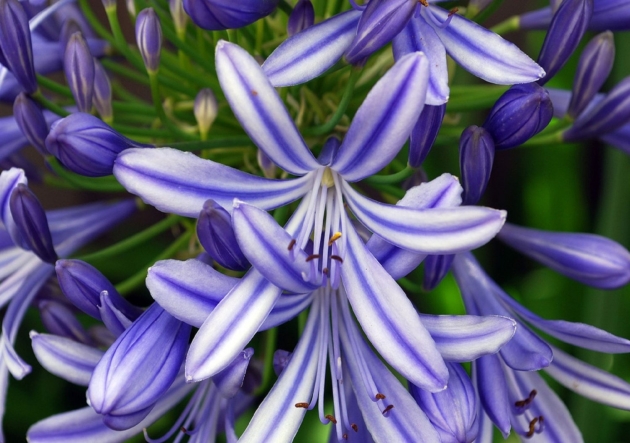
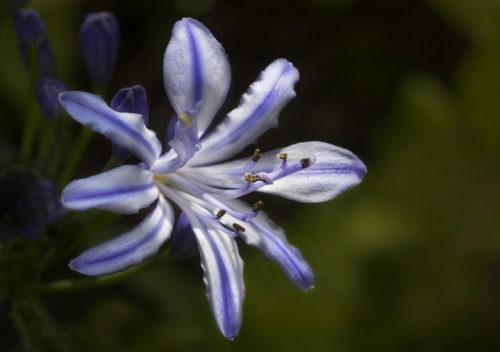
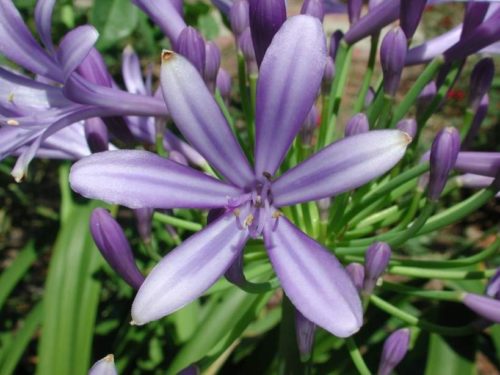
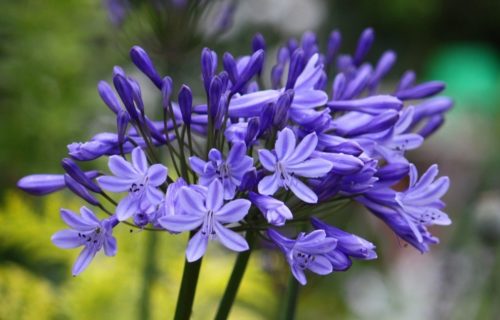
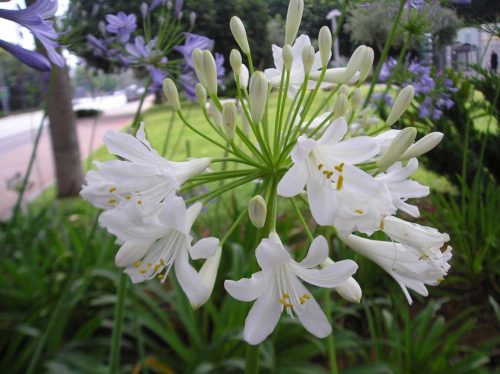


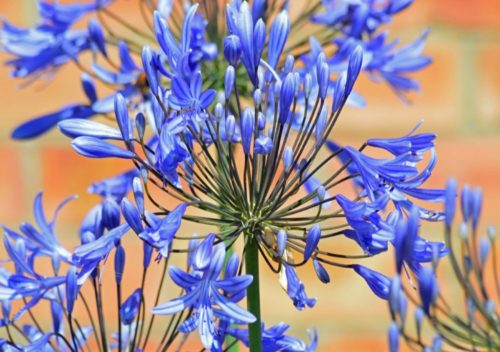
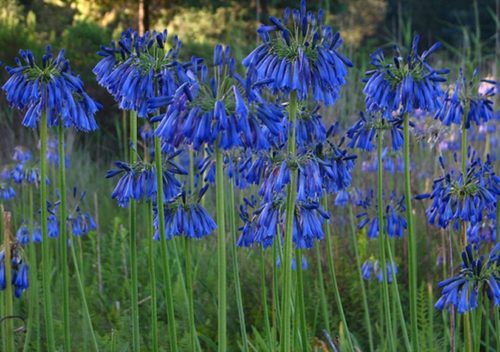

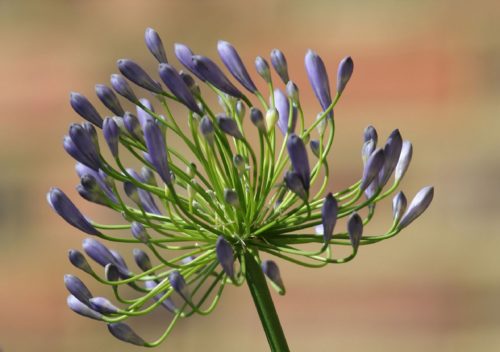
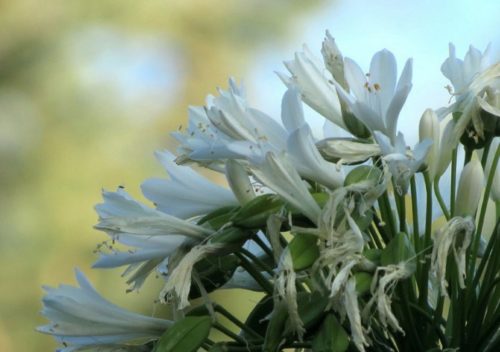
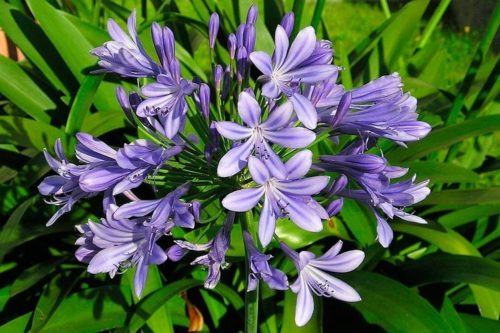

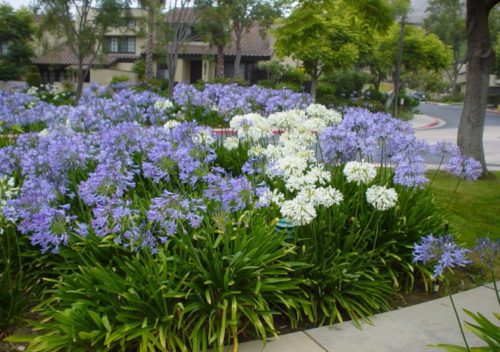
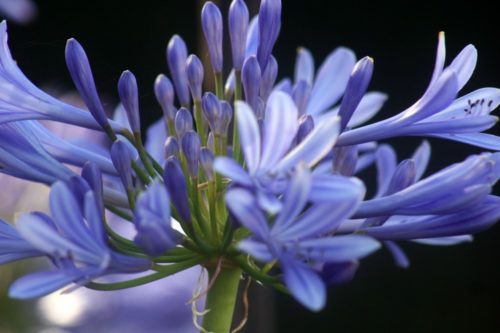
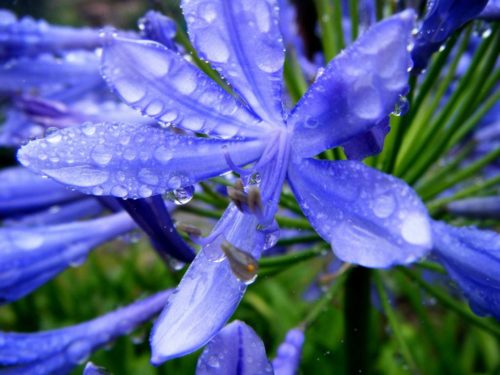
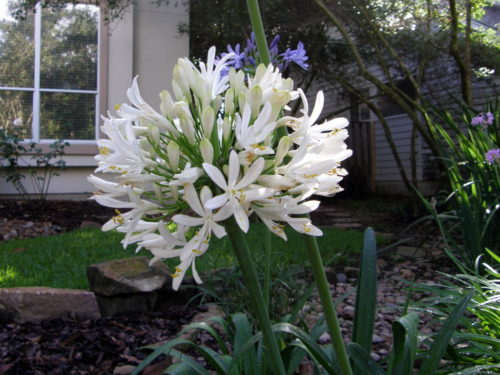



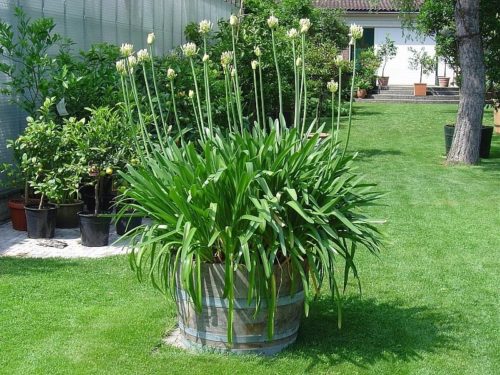












 Start a discussion ...
Start a discussion ...